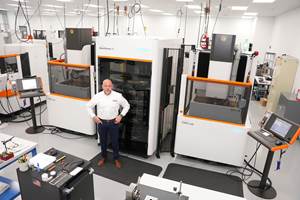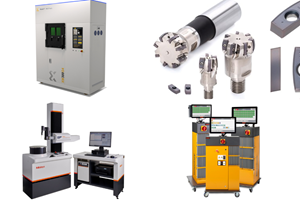
The first step on the AI journey should start with a simple question: “If we knew more, what could we do to improve the business?” Imagine your team predicting the future and then identifying the necessary changes to optimize speed, accuracy or cost. That’s possible with AI.
However, when implementing AI, many projects are not making it into production due to confusion about the use case or unclear ROI. Managers skip a lot of steps before taking on AI. Performing thoughtful discussions and outlining expectations is an absolute requirement before choosing an AI vendor or hiring a data science team.
Understanding the Complexity of Predictive Maintenance
In manufacturing settings, a “usual suspect” for AI is predictive maintenance. That’s the area many floor managers consider, mostly when senior management reads about its usage. It is a more mature area for manufacturers, one that’s enjoying faster adoption. But is using AI for predictive maintenance a cost-effective use of resources?
There are significant challenges in using AI and machine learning tools to monitor machines and predict maintenance intervals. Assume you have five of the same machines running on the floor. When one breaks, it takes three days to repair, on average. And every day of non-operation costs $250,000. You want to put in place sensors and predictive maintenance but need to consider the other variables. Maybe the fail rate of the machines in question is once every three years. At that rate, the ROI of new sensors, data monitoring and potentially adding on a new staff member do not compare favorably to the $250,000 opportunity cost.
When machine lifecycles happen over years or decades, predictive maintenance is difficult without long-term data collection. With limited data and wear-and-tear variables, data scientists often cannot accurately predict needed maintenance or failure probabilities. It’s through no fault of their own; they cannot control how predictive these events are, and it turns out they usually aren’t very.
The complexity of predictive maintenance is like using AI for predicting rehospitalization rates for a specific patient pool. The hospital might have historical data and medical records, but there’s enormous variability. Does a patient listen to their doctor? Do they have markedly different home environments, with one living in the fresh country air and the other surrounded by chronic smokers? With machinery, sometimes metal or plastic bends, despite the predictive model stating it should be operational another 18 months. There’s variability at play. In many instances, it’s better to rely on the workers to leverage their knowledge and expertise to develop cheaper predictive and preventative maintenance models, and use AI for other use cases.

Starting Simple to find ROI
Using AI in manufacturing requires a measured approach. Start simple, prove the concept and ROI, and then move towards more complexity. This approach shows the value for the AI and machine learning spend and gets everyone from ownership to the shopfloor employees on board with the produced insights and improvements. If you have limited visibility into your operations, an early usage for sensors and AI determines if some of your machines are idle when they should be running.
Once you are armed with statistical AI models, consider the tangible changes the business can make. Go through the actual process. Consider what the steps happening on the factory floor every day are. Where do you lose money? Are there issues with miscalibrations and need to throw away parts? That’s an opportunity for machine learning and computer vision to measure parts in real time. Calibrations can then happen on mistake number 10 instead of 200, saving time and money.
If you’re producing plastic parts, you might be stopping the press to check for mold wear and other metrics. Sensors and AI can add data to this process by accounting for environmental conditions and performing measurements automatically during production. The result? Improvements in speed and accuracy, along with potentially moving workers to more productive and revenue-generating activities. So instead of someone checking parts manually, a camera and machine learning can perform the task at speed and accuracy that’s impossible with human eyes.
AI and machine learning bring promise to manufacturing, but they are not magic wands that can fix every problem. Take your time with AI by first identifying your shop’s pain points and operational issues, and then learn the best practices and applications of AI that can help you.
Related Content
Mold Builder Meets Increased Domestic Demand With Automated Cells
Burteck LLC experienced significant demand increases due to reshoring and invested in automated machining cells to step up its production output quickly and avoid losing business.
Read MoreDynamic Tool Corporation – Creating the Team to Move Moldmaking Into the Future
For 40+ years, Dynamic Tool Corp. has offered precision tooling, emphasizing education, mentoring and innovation. The company is committed to excellence, integrity, safety and customer service, as well as inspiring growth and quality in manufacturing.
Read MoreDevelopments in High-Speed Machining Technology
There have been many exciting developments in high-speed machining relative to machining centers and controls, tooling and CAD/CAM systems.
Read MoreProducts and Services for Multiple Moldmaking Needs
New year, new technology roundup! Featured here is a collection of product offerings, from profile milling cutters to industry-specific CAD/CAM software to innovative hot work tool steels.
Read MoreRead Next
Reasons to Use Fiber Lasers for Mold Cleaning
Fiber lasers offer a simplicity, speed, control and portability, minimizing mold cleaning risks.
Read MoreAre You a Moldmaker Considering 3D Printing? Consider the 3D Printing Workshop at NPE2024
Presentations will cover 3D printing for mold tooling, material innovation, product development, bridge production and full-scale, high-volume additive manufacturing.
Read MoreHow to Use Continuing Education to Remain Competitive in Moldmaking
Continued training helps moldmakers make tooling decisions and properly use the latest cutting tool to efficiently machine high-quality molds.
Read More













.jpg;maxWidth=300;quality=90)








